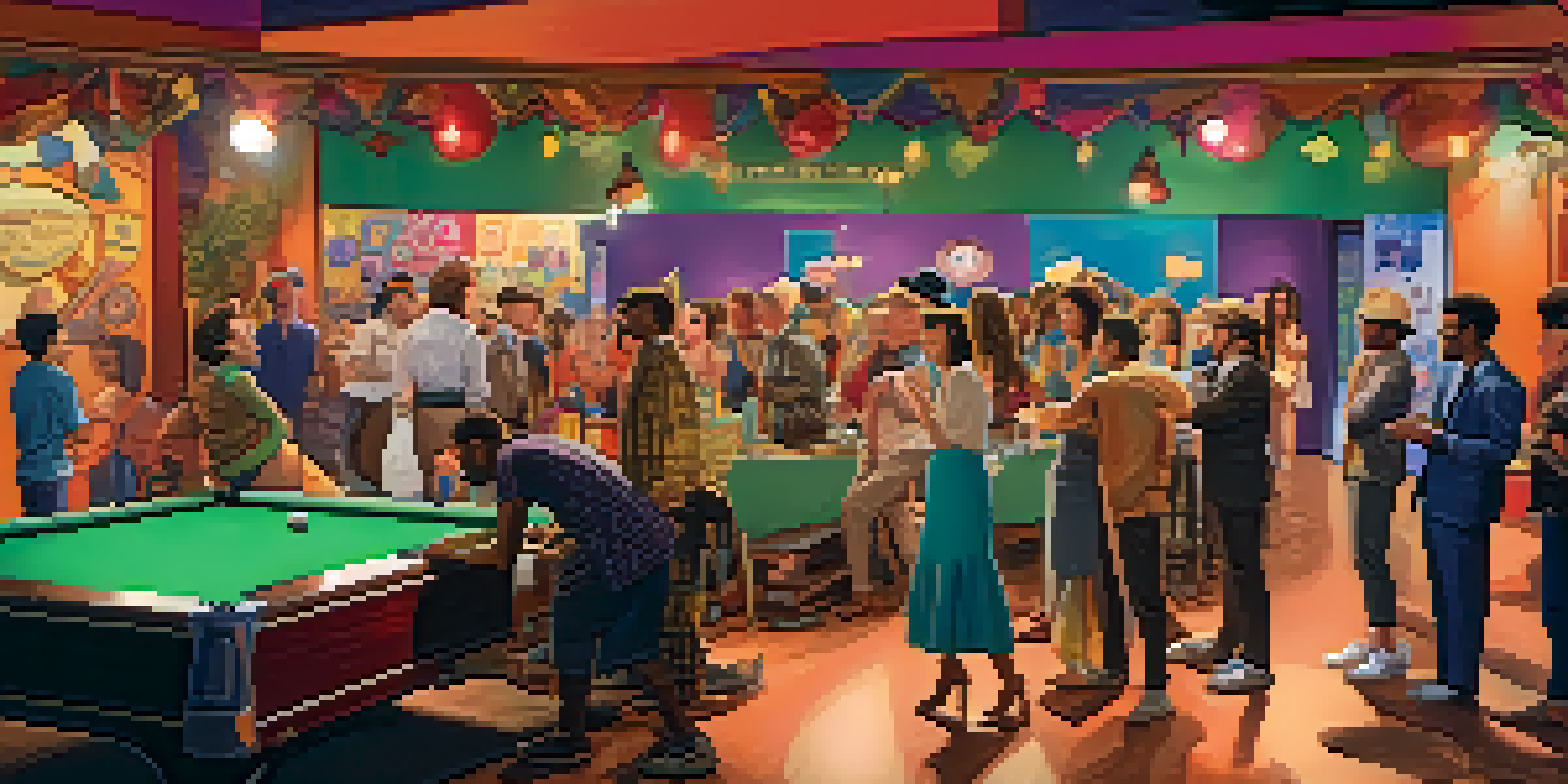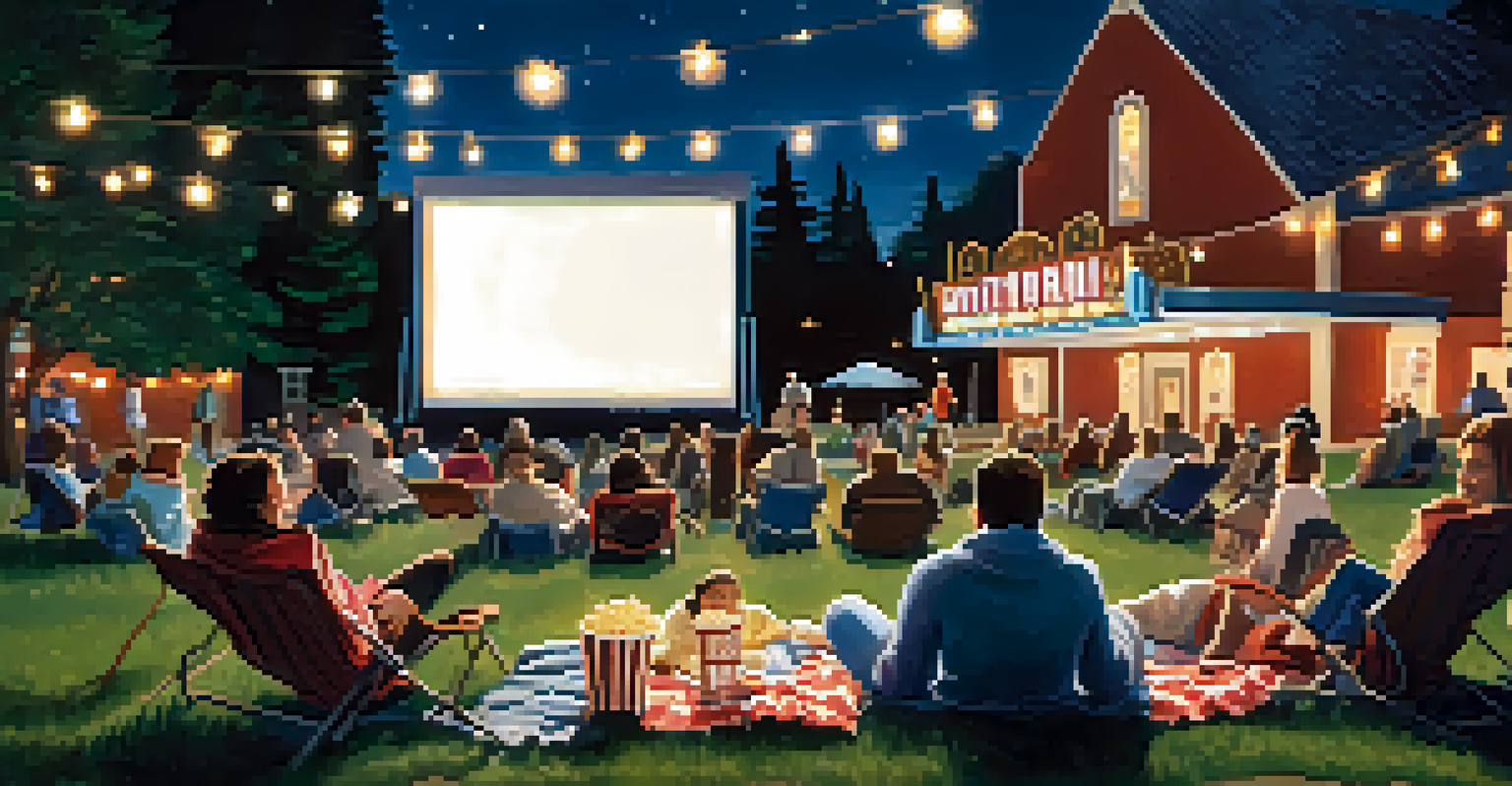The Impact of Comedy on Audience Engagement in Film

Understanding the Role of Comedy in Film Engagement
Comedy has long been a staple in cinema, serving not only to entertain but also to engage audiences on a deeper level. Films that incorporate humor often create a unique bond with viewers, making them feel more connected to the story and characters. This connection can lead to a more immersive experience, where laughter enhances emotional investment.
Comedy is simply a funny way of being serious.
Think about your favorite comedies—chances are, those moments of laughter left a lasting impression. When audiences find something genuinely funny, they are more likely to remember the film and discuss it with others. This word-of-mouth promotion is invaluable in the film industry, as it can significantly boost a film's popularity.
Moreover, comedy can break down barriers and create relatable experiences. Whether it's a quirky character or a humorous situation, these elements can resonate with diverse audiences, making the film accessible and enjoyable for everyone.
The Emotional Impact of Laughter on Viewers
Laughter is a powerful emotional release, and it can dramatically affect how audiences perceive a film. When viewers laugh, their bodies release endorphins, which can make them feel happier and more relaxed. This positive emotional state can lead to a more favorable reception of the film overall.

For instance, a film that cleverly balances humor with serious themes can help audiences process complex emotions. By interspersing comedic moments throughout dramatic scenes, filmmakers can create a rollercoaster of feelings that keeps viewers engaged and invested in the narrative.
Comedy Strengthens Audience Connection
Humor creates a unique bond between viewers and characters, enhancing emotional investment and fostering memorable experiences.
Additionally, laughter can serve as a coping mechanism, allowing audiences to confront difficult topics in a more approachable way. Comedic elements can soften the blow of heavier themes, creating a safe space for discussion and reflection.
Creating Memorable Characters Through Humor
One of the most effective ways to engage audiences is through well-crafted comedic characters. These characters often possess unique quirks or catchphrases that resonate with viewers, making them unforgettable. Think of iconic characters like Ron Burgundy from 'Anchorman' or the lovable Minions from 'Despicable Me'—their humor contributes significantly to their popularity.
Laughter is the shortest distance between two people.
Moreover, comedic characters often embody traits that audiences find relatable, which enhances their appeal. When viewers see parts of themselves in these characters, it fosters a sense of connection, encouraging them to invest more emotionally in their journeys.
In essence, humor can elevate character development, making them not only funny but also multi-dimensional. This depth allows audiences to care about their fates, creating a lasting impact long after the credits roll.
The Role of Timing in Comedic Effectiveness
Timing is crucial in comedy, and filmmakers often use it to maximize audience engagement. A well-timed joke or a pause before a punchline can amplify the humor, ensuring that viewers are fully immersed in the moment. This precision in timing keeps audiences on their toes, eager to see what happens next.
Consider how a sudden comedic twist can change the trajectory of a scene. It not only elicits laughter but also re-engages viewers’ attention, pulling them back into the narrative. This technique can be particularly effective in long films, preventing lulls in audience interest.
Laughter Facilitates Emotional Release
Laughter not only boosts mood through endorphin release but also helps audiences process complex themes in a more approachable way.
Ultimately, the mastery of comedic timing contributes to a film's overall success. By keeping audiences laughing and engaged, filmmakers can ensure their message resonates while also providing entertainment.
Cultural References and Their Impact on Humor
Humor often relies on cultural references that resonate with specific audiences. These references can range from current events to pop culture icons, creating a shared understanding that enhances engagement. When viewers recognize and relate to these nods, they feel more connected to the film.
For example, a comedy that cleverly incorporates trending topics or social commentary can spark conversations among audiences. This engagement extends beyond the theater, as viewers discuss and share their thoughts on social media, further promoting the film.
However, it’s essential for filmmakers to strike a balance; over-reliance on niche references can alienate some viewers. A well-executed blend of universal humor with specific cultural elements can create a rich tapestry that appeals to a broader audience.
The Influence of Genre Blending on Audience Engagement
The blending of genres, particularly comedy with other genres like drama or horror, can create a more engaging film experience. This hybrid approach allows filmmakers to explore complex themes while still keeping audiences entertained. For instance, horror comedies like 'Shaun of the Dead' masterfully balance scares with laughs, resulting in a unique viewing experience.
When genres are combined effectively, they can attract a wider audience. Fans of one genre may be drawn in by the comedic elements while also appreciating the underlying themes, creating a diverse viewer base.
Timing Enhances Comedic Engagement
Effective comedic timing keeps audiences engaged and adds depth to storytelling, making films more entertaining and impactful.
Ultimately, genre blending enriches storytelling and enhances audience engagement by keeping viewers guessing. The unpredictability of a comedic twist in a serious narrative can lead to memorable moments that audiences cherish.
How Comedy Encourages Audience Interaction
Comedy has a unique ability to encourage audience interaction, whether it’s through laughter, gasps, or even discussions during and after the film. This interactive element can significantly enhance the overall experience, making viewers feel like part of the action. It's not uncommon for audiences to share knowing glances or chuckles, fostering a communal atmosphere in theaters.
In many cases, comedy also invites viewers to engage with the film on a deeper level. When a joke lands, it creates a shared moment that can spark conversations about the film's themes, characters, or even societal issues. This dialogue can lead to greater appreciation and understanding of the film's message.

Furthermore, the rise of social media has amplified this interaction, as audiences share their favorite quotes, memes, and moments from films. This digital engagement extends a film's reach and longevity, proving that comedy plays a significant role in audience engagement beyond the theater.